Galand Tue Tue Revolver
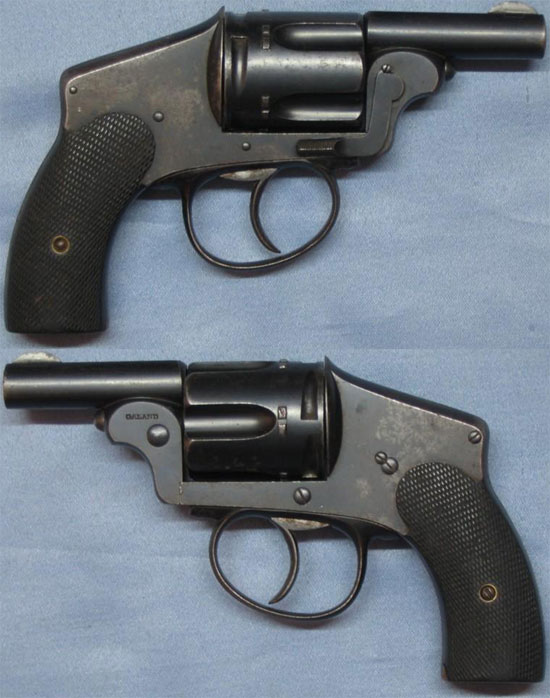
Galand Tue Tue
with detachable barrel
| Caliber, mm | 8x24 R |
|---|---|
| Length, mm | 145 |
| Barrel length, mm | 50 |
| Weight without cartridges, kg | 0.32 |
| Drum, number of cartridges | 5 |
In the first half of the 1890s, the French gunsmith Charles François Galand, who worked in France and Belgium, created a pocket 8 mm revolver with a hidden hammer, called the Tue Tue.
A new 8x24 R cartridge was developed specifically for this revolver, which looks very similar to the 8x27 R Lebel cartridge. The Tue Tue revolver was later modified to use .32 S&W and 7.65 Browning cartridges.
Structurally, the Tue Tue consisted of three main parts - the frame, the drum and the receiver block. The revolver was produced in two versions: with a barrel block that could be removed forward or lowered down.
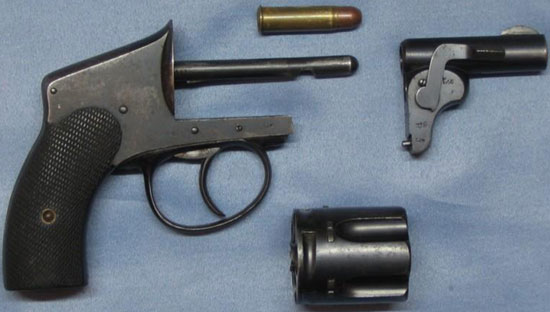
Galand Tue Tue when reloading
in the detachable barrel version
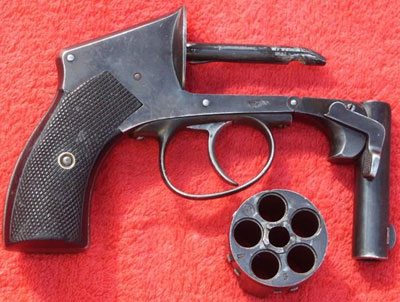
Galand Tue Tue when reloading
with a lowering barrel
The frame of the revolver is steel, has semicircular cheeks cast on the left and right sides, covering the breech of the drum.
On the right side of the receiver block there is a lever designed for its rigid fixation on the drum axis and frame. The steel barrel has four right-hand rifling.
The weapon is fed from a cylindrical drum with five chambers. On its surface at the back, grooves have been selected to ensure the fixation of the drum when it is turned, and on the side surface there are oval chamfers to lighten the weight.
To reload the weapon, the receiver unit is completely detached (or, in the second version, lowered by rotating down), and the drum is removed (moved forward) from the rigidly fixed axis on the revolver frame.
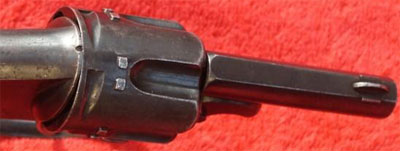
Galand Tue Tue
Top View
The firing mechanism is self-cocking, mounted inside the frame. The hammer is hidden inside the body.
The sights consist of a small semicircular front sight at the muzzle, as well as a rear sight in the form of a slot on the top of the frame.
The handle of the revolver is formed by two plastic cheeks tightened by a screw.
The Galand Tue Tue revolver was in demand as a self-defense weapon until pocket revolvers were supplanted from the market by pocket automatic pistols.
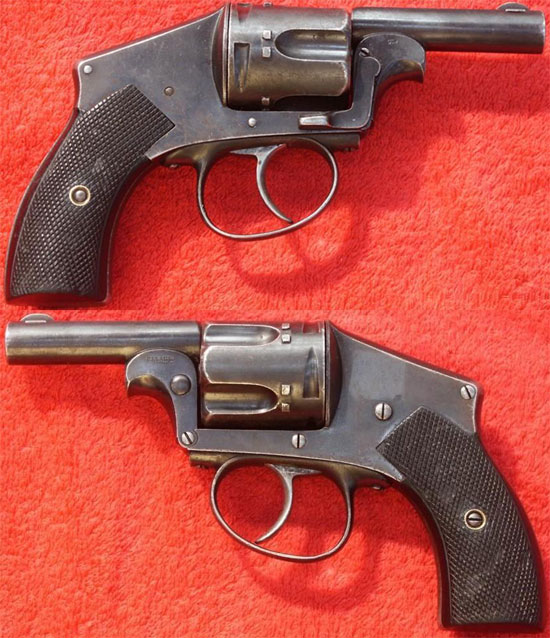
Galand Tue Tue
in Lowering Barrel Version